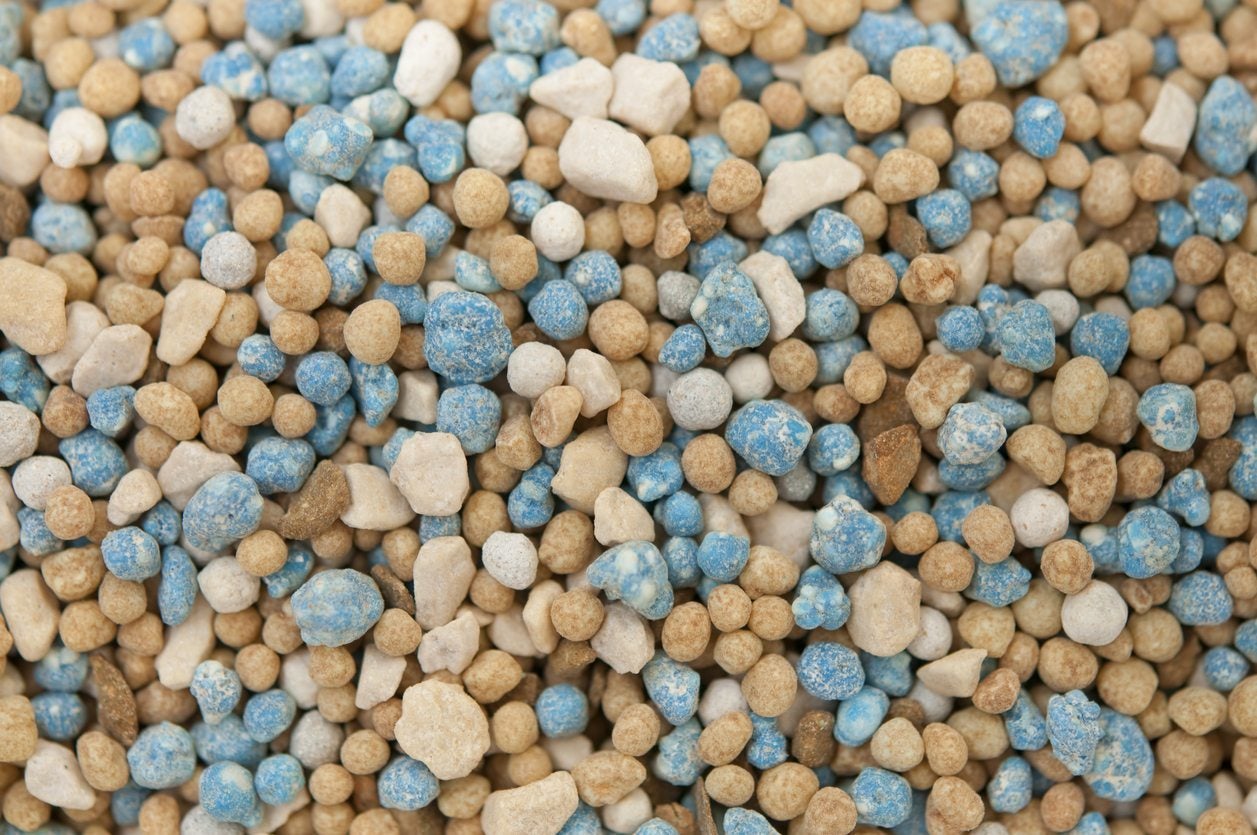
Pots, or planters, can be made from various types of materials, including plastic, terracotta, ceramic, and more. The most common planter is a "standard-size pot," which means the diameter at the top of the pot is the same as the height.
It's best to choose a planter that is a few inches wider than the plant's rootball all the way around. There is a myth that planting in a large pot will make your plant grow bigger, faster. This isn't true and can cause issues for the plant because there is too much soil and water available.

Pot is a bit larger than rootball
The most important thing about any planter is that it has a drainage hole.
Drainage is critical. Without drainage, watering is much harder. How do you fully saturate the soil without leaving water behind? You are either compensating by underwatering your plant, or overwatering it and creating a swamp at the bottom of the planter. Not having drainage also eliminates the option of soil flushing. This leads to the buildup of salt and other minerals, causing plants to become dehydrated even when you’re watering them.
Most planters with drainage holes come with a saucer for the plant to sit in. This allows any remaining water to be caught without damaging the surface it’s sitting on. However, you never want to let water sit in the saucer because this can cause root rot and molding.

Water in saucer
If you have a container without a drainage hole, it can be used as a decorative container to hold a more utilitarian or unattractive plater inside. This is basically a pot within a pot. You remove the inner pot when watering the plant, let it drain, and then return it to the decorative pot.

Pot within a pot
You can also drill a hole into a pot by using a masonry drill bit or a diamond-tipped drill bit.

Drilled hole in pot
Below are basic potting supplies:
Potting mix is another word for soil or medium. Soil anchors the roots in the container, supplies water and nutrients, and provides aeration. There are many different types of soil mixes, and some are specific to certain plant species. Most mixes are a combination of peat moss, coco coir, sphagnum moss, pearlite, pumice, lava rock, sand, wood chips, or bark.
All-purpose potting mix works well for most foliage plants. There are mixes specifically made for plants such as cacti, succulents, and African violets. Cacti and succulents like a fast-draining mix that includes sand and other components, while African violets like mixes with peat moss and perlite for added drainage.
In general, a chunky potting mix with different sized particles is the way to go. These particles create small air pockets dispersed throughout the rootball. Paired with a planter than has drainage, this prevents root rot and overwatering.

Chunky potting mix
Some recommended brands are FoxFarm, Mother Earth, Good Dirt, and Sol Soils. You can find these at home improvement stores, plant stores and nurseries, and even places like Walmart.

While placing rocks at the bottom of a planter is a common suggestion, this is not recommended. This creates two issues. The first issue is that it creates an opportunity for a swampy reservoir to form. The stagnant water can’t fully drain, and the plant roots can’t reach through the rocks to absorb it. The second issue it that it creates a perched water table, which means that it is difficult for liquid to move from a fine material (like potting mix) to a coarser material (like a drainage layer) because of the difference in available air spaces. This keeps water with the roots rather than moving through the rocks.

Because of these reasons, a rock layer keeps your potting mix more waterlogged, not less. Using soil all the way through also gives more room for roots to grow.
Fertilizer is a way to introduce nutrients to your plants. Fertilizing can be found in a range of things, like potting mix, additives, and more. Below are components of typical fertilizers:
Plants grown outside get their nutrients from the soil. The same thing happens with our houseplants, but because they are in a contained environment, they use up the nutrients in soil and don’t have a full range available to them. It is difficult for plants to only use nutrients from water. Plants need different macro and micro nutrients to achieve optimal growth.
There are different types of fertilizers:
Fertilizing frequency depends on the type of fertilizer you're using. Some fertilizers are used every time you water, while others are used periodically during the growing season. Follow the instructions for whatever product you’re using. Fertilizing isn't necessary, but it helps plants thrive.

Liquid fertilizer from Happy Happy Houseplant

Water-soluble fertilizer

Slow-release fertilizer